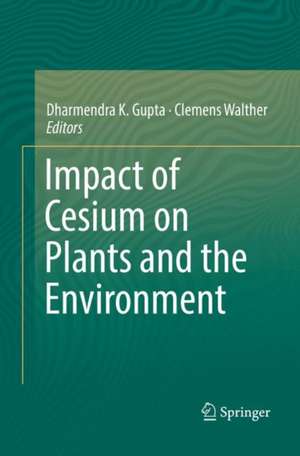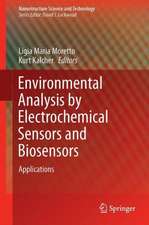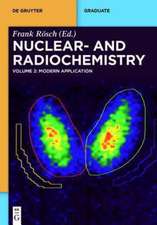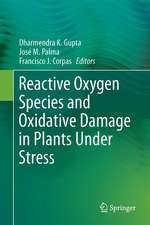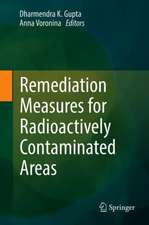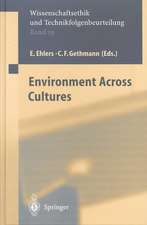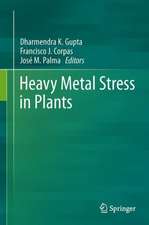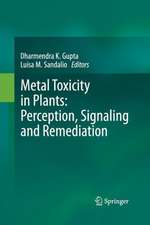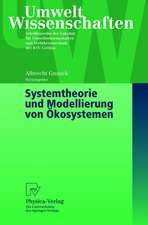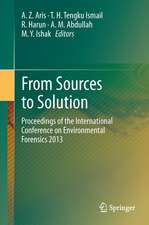Impact of Cesium on Plants and the Environment
Editat de Dharmendra K. Gupta, Clemens Waltheren Limba Engleză Paperback – 7 iul 2018
This book provides extensive and comprehensive knowledge to the researchers/academics who are working in the field of cesium contaminated sites, and the impact on plants. This book is also helpful for graduate and undergraduate students who are specializing in radioecology or safe disposal of radioactive waste, remediation of legacies and the impact on the environment. Radiocesium (137Cs and 134Cs) was released into the environment as a result of nuclear weapons testing in 1950s and 1960s (~1x1018 Bq), and later due to the Chernobyl accident in 1986 (8.5x1016 Bq) and Fukushima Daiichi Nuclear Power Plant in 2011 (~1x1017 Bq). 137Cs is still of relevance due to its half-life of 30 years. The study of radioisotope 137Cs is important, as production and emission rates are high compared to other radioisotopes, due to high fission yield and high volatility.
This book contains original work and reviews on how cesium is released into the environment on translocation from soil to plants and further on to animals and into the human food chain. Separate chapters focus on the effective half-life of cesium in plants and on how different cultivars are responding in accumulation of cesium. Other key chapters focus on cesium impact on single cells to higher plants and also on remediation measures as well as on basic mechanism used for remedial options and analysis of transfer factors. The book rounds off by contributions on cesium uptake and translocation and its toxicity in plants after the Chernobyl and Fukushima accidents.
| Toate formatele și edițiile | Preț | Express |
|---|---|---|
| Paperback (1) | 642.18 lei 6-8 săpt. | |
| Springer International Publishing – 7 iul 2018 | 642.18 lei 6-8 săpt. | |
| Hardback (1) | 648.42 lei 6-8 săpt. | |
| Springer International Publishing – 24 oct 2016 | 648.42 lei 6-8 săpt. |
Preț: 642.18 lei
Preț vechi: 755.51 lei
-15% Nou
Puncte Express: 963
Preț estimativ în valută:
122.88€ • 128.62$ • 102.28£
122.88€ • 128.62$ • 102.28£
Carte tipărită la comandă
Livrare economică 31 martie-14 aprilie
Preluare comenzi: 021 569.72.76
Specificații
ISBN-13: 9783319823768
ISBN-10: 3319823760
Ilustrații: X, 319 p. 61 illus., 28 illus. in color.
Dimensiuni: 155 x 235 mm
Greutate: 0.47 kg
Ediția:Softcover reprint of the original 1st ed. 2017
Editura: Springer International Publishing
Colecția Springer
Locul publicării:Cham, Switzerland
ISBN-10: 3319823760
Ilustrații: X, 319 p. 61 illus., 28 illus. in color.
Dimensiuni: 155 x 235 mm
Greutate: 0.47 kg
Ediția:Softcover reprint of the original 1st ed. 2017
Editura: Springer International Publishing
Colecția Springer
Locul publicării:Cham, Switzerland
Cuprins
Distribution of cesium in soil and its uptake by plants.- Factors influencing the soil to plant transfer of radiocaesium.- Role of mycorrhizal fungi in cesium uptake by plants.- Influence of biologically active preparations on Cs-137 transition to plants from soil in the territories contaminated as the result of Chernobyl accident.- The distribution of 137Cs in selected compartments of coniferous forests in the Czech Republic.- Cesium uptake in plants: Mechanism, regulation and application for phytoremediation.- Effective half-lives of radiocesium in terrestrial plants observed after nuclear power plant accidents.- Cultivar difference and fertilizer effects on radioactive cesium accumulation in rice grown in Fukushima paddy field from 2011 to 2014.- Distribution of 137Cs between the components of pine forest of Charnobyl NPP exclusion zone.- Cesium accumulation by aquatic plants and algae.- Regularities of accumulation of Cs-137 and other radionuclides in the aquatic vegetation in the territory of South-Ural biogeochemical province of technogenic radioactive isotopes.- Radiocesium phytotoxicity to single cell and higher plants.- Sorbents for radiocaesium removal from natural water and soil.- Analysis of transfer factor, anatomical changes and growth of plants during phytoremediation of cesium contaminated solutions.- Remediation of areas contaminated by caesium: Basic mechanisms behind remedial options and experience in application.
Notă biografică
Dharmendra K. Gupta is Sr. Scientist of Environmental Biotechnology and already published more than 70 refereed research papers/review articles in peer reviewed journals and edited nine books. His field of research includes abiotic stress by heavy metals/radionuclides and xenobiotics in plants; antioxidative system in plants, environmental pollution (heavy metal/radionuclide) remediation through plants (phytoremediation).
Clemens Walther is professor of radioecology and radiation protection and director of the Institute for Radioecology and Radiation Protection at the Leibniz Universität Hannover. He published more than 100 papers in peer reviewed journals. His field of research is actinide chemistry with a focus on solution species and formation of colloids, ultra-trace detection and speciation of radionuclides in the environment by mass spectrometry and laser spectroscopy.
Textul de pe ultima copertă
This book provides extensive and comprehensive knowledge to the researchers/academics who are working in the field of cesium contaminated sites, and the impact on plants. This book is also helpful for graduate and undergraduate students who are specializing in radioecology or safe disposal of radioactive waste, remediation of legacies and the impact on the environment. Radiocesium (137Cs and 134Cs) was released into the environment as a result of nuclear weapons testing in 1950s and 1960s (~1x1018 Bq), and later due to the Chernobyl accident in 1986 (8.5x1016 Bq) and Fukushima Daiichi Nuclear Power Plant in 2011 (~1x1017 Bq). 137Cs is still of relevance due to its half-life of 30 years. The study of radioisotope 137Cs is important, as production and emission rates are high compared to other radioisotopes, due to high fission yield and high volatility.
This book contains original work and reviews on how cesium is released into the environment on translocation from soil to plants and further on to animals and into the human food chain. Separate chapters focus on the effective half-life of cesium in plants and on how different cultivars are responding in accumulation of cesium. Other key chapters focus on cesium impact on single cells to higher plants and also on remediation measures as well as on basic mechanism used for remedial options and analysis of transfer factors. The book rounds off by contributions on cesium uptake and translocation and its toxicity in plants after the Chernobyl and Fukushima accidents.
Caracteristici
Provides extensive and comprehensive knowledge to researchers and academicians working in the field of radiocesium contaminated sites Is a resource for graduate and undergraduate students specializing in radioecology or safe disposal of radiocesium contaminated waste, remediation of legacies and the impact on natural and man-made environment Covers recent advancements in radiocesium chemistry, how they enter into the natural environment, it’s impact on natural as well as man-made systems, and it’s ecological risk characterization for soil, plants and wildlife interaction Includes supplementary material: sn.pub/extras
